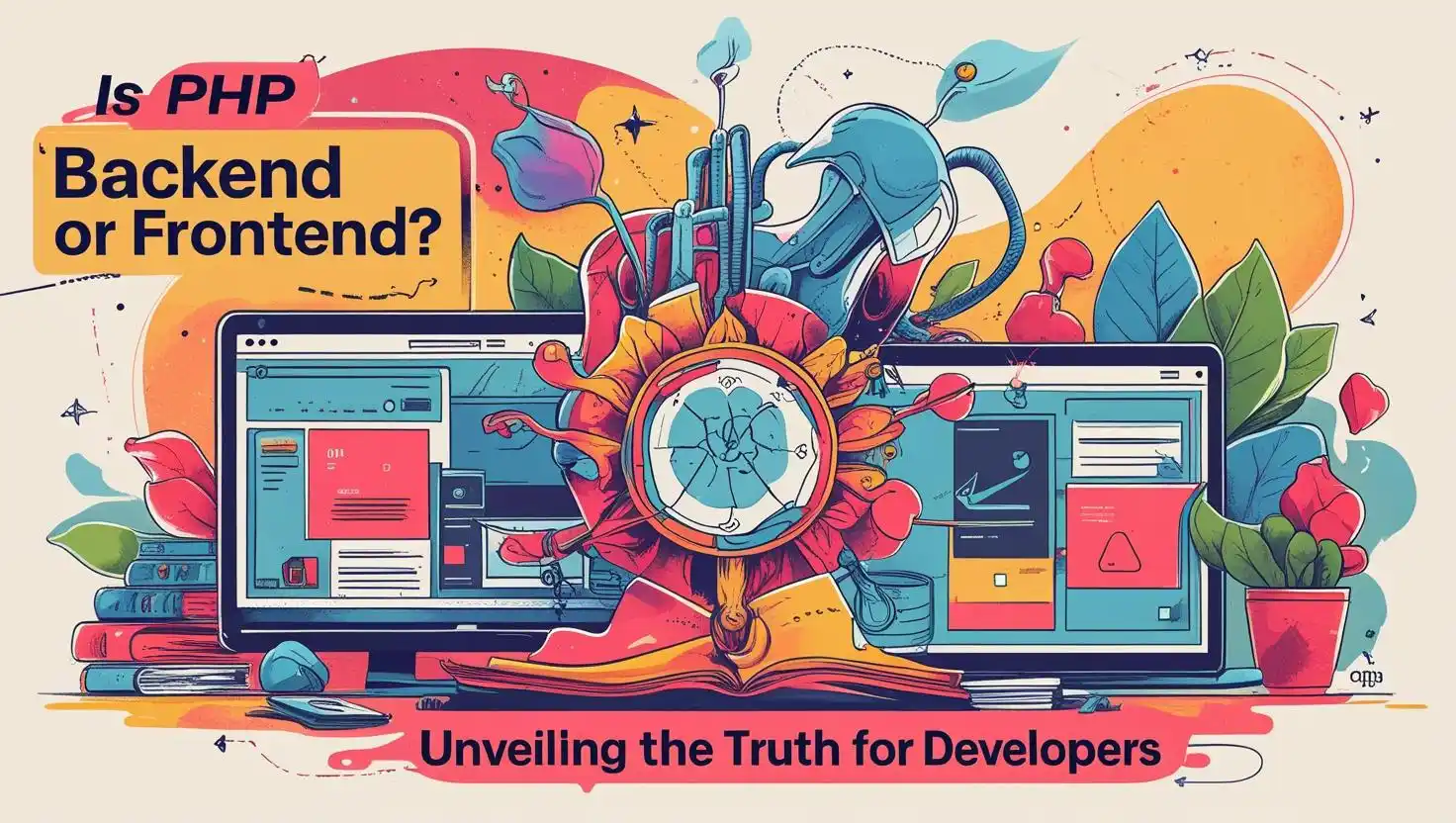Is PHP Backend or Frontend? Unveiling the Truth for Developers

Hello and welcome, future developers! I’m Somen, a passionate PHP developer and your friendly guide from MATSEOTOOLS. Whether you’re just dipping your toes into coding or trying to figure out how web development works, today’s topic is one of the most common and important questions beginners ask: Is PHP Backend or Frontend? If you’ve ever wondered what role PHP plays in building websites, why it’s still worth learning, and how it can shape your journey as a developer, you’re in exactly the right place. Let’s unravel this together—and have a little fun along the way!
What This Is About
When you start your journey in web development, you’ll quickly encounter two big words: frontend and backend. These aren’t just fancy buzzwords—they represent the two big worlds that bring your favorite websites to life.
So, is PHP backend or frontend? To put it simply, PHP is almost always a backend language. But what exactly does that mean?
Frontend vs. Backend: Breaking Down the Basics
Frontend refers to everything you see and interact with on a website—the buttons, colors, text, images, and forms. Think of it as the store’s front window that invites you in and lets you browse.
Backend is what happens behind the scenes—the engines, gears, and databases that store your information, authenticate users, and send dynamic content to the frontend. If the frontend is the shop window, the backend is the storeroom and cashier making everything work.
| Frontend | Backend |
|---|---|
| Everything you see on the website (HTML, CSS, JavaScript) | Server-side logic, databases, authentication (PHP, Node.js, Python, etc.) |
| Runs in your web browser | Runs on the server before the page is sent to you |
| Examples: Animations, buttons, layouts | Examples: User logins, data processing, saving orders |
PHP’s True Role: The Server-Side King
PHP stands for Hypertext Preprocessor. It works on the backend—on the server—handling all the logic before a web page reaches your browser. For example, when you fill out a contact form or log in to your favorite website, it’s PHP working (often behind the curtain) to process your data, check your password, and send you to the right place.
<?php
// A simple PHP script to display a message
echo "Hello from the backend!";
?>When you visit a PHP-powered website, the server runs this code first, then sends the result—often plain HTML—to your browser. You never see the actual PHP code, only what it outputs!
Why PHP Devs Should Care
If you’re aiming to become a strong developer, understanding PHP’s role will help you decide what skills to focus on. It’s like knowing whether you want to bake the bread or design the bakery window—it’s not the same job. Many beginners assume web coding is all about what you see, but the most powerful work often happens behind the scenes.
The Power of Backend PHP
Here’s why PHP is still a superstar on the backend:
- Dynamic Content: PHP can generate web pages that change based on user input. Every time you log into an e-commerce site, it’s likely a PHP script fetching your unique order history from a database.
- Database Interaction: PHP “talks” to databases like MySQL to store, retrieve, or update information. Take a look at this:
<?php
// Connect to a MySQL database and fetch user info
$connection = mysqli_connect("localhost", "root", "password", "matseotools_db");
$result = mysqli_query($connection, "SELECT * FROM users");
while($row = mysqli_fetch_assoc($result)) {
echo $row['username'];
}
?>Without backend scripting, your site would be static—like a printed brochure that never changes. PHP makes your website come alive by letting you personalize pages, process payments, or even power entire content management systems like WordPress!
How to Use PHP: Basic Example
Ready for hands-on action? Here’s a basic example to show how PHP fits into a typical web page. Imagine you want to greet every visitor with a unique message:
<?php
$user = "Somen";
echo "Hello, $user! Welcome to MATSEOTOOLS.";
?>The server runs this code, and the browser only sees:
Hello, Somen! Welcome to MATSEOTOOLS.This is the essence of PHP on the backend: you write the logic, the server does the heavy lifting, and users see a custom-made result—without ever touching the PHP code itself.
Can PHP Do Frontend Work?
Here’s where many beginners get curious. While PHP generates HTML, CSS, and JavaScript which appear in a browser, the PHP code itself does not run in the browser or handle direct user interaction. It finishes its job on the server before the page arrives at your computer. So, the direct answer to “is PHP backend or frontend?” is that PHP is firmly a backend language.
But, a PHP developer needs to understand both sides. PHP outputs frontend code, so knowing the basics of HTML, CSS, and JavaScript helps you create more engaging and interactive websites—even though the PHP itself is always backstage.
Final Thought
I hope this blog cleared up the confusion! PHP is a backend powerhouse, running server-side logic, handling databases, and keeping your websites dynamic and interactive. If you want to be the engineer behind the scenes making everything work smoothly, PHP is an excellent place to start your development journey.
Curious to dig deeper? Check out our latest blog articles for more hands-on guides, tips, and friendly advice!
Written by Somen from MATSEOTOOLS
 Some Question
Some Question


